Based on the guide Implementing PCA in Python, by Sebastian Raschka I am building the PCA algorithm from scratch for my research purpose. The class definition is:
import numpy as np
class PCA(object):
"""Dimension Reduction using Principal Component Analysis (PCA)
It is the procces of computing principal components which explains the
maximum variation of the dataset using fewer components.
:type n_components: int, optional
:param n_components: Number of components to consider, if not set then
`n_components = min(n_samples, n_features)`, where
`n_samples` is the number of samples, and
`n_features` is the number of features (i.e.,
dimension of the dataset).
Attributes
==========
:type covariance_: np.ndarray
:param covariance_: Coviarance Matrix
:type eig_vals_: np.ndarray
:param eig_vals_: Calculated Eigen Values
:type eig_vecs_: np.ndarray
:param eig_vecs_: Calculated Eigen Vectors
:type explained_variance_: np.ndarray
:param explained_variance_: Explained Variance of Each Principal Components
:type cum_explained_variance_: np.ndarray
:param cum_explained_variance_: Cumulative Explained Variables
"""
def __init__(self, n_components : int = None):
"""Default Constructor for Initialization"""
self.n_components = n_components
def fit_transform(self, X : np.ndarray):
"""Fit the PCA algorithm into the Dataset"""
if not self.n_components:
self.n_components = min(X.shape)
self.covariance_ = np.cov(X.T)
# calculate eigens
self.eig_vals_, self.eig_vecs_ = np.linalg.eig(self.covariance_)
# explained variance
_tot_eig_vals = sum(self.eig_vals_)
self.explained_variance_ = np.array([(i / _tot_eig_vals) * 100 for i in sorted(self.eig_vals_, reverse = True)])
self.cum_explained_variance_ = np.cumsum(self.explained_variance_)
# define `W` as `d x k`-dimension
self.W_ = self.eig_vecs_[:, :self.n_components]
print(X.shape, self.W_.shape)
return X.dot(self.W_)
Consider the iris-dataset as a test case, PCA is achieved and visualized as follows:
import numpy as np
import pandas as pd
import seaborn as sns
import matplotlib.pyplot as plt
# loading iris data, and normalize
from sklearn.datasets import load_iris
iris = load_iris()
from sklearn.preprocessing import MinMaxScaler
X, y = iris.data, iris.target
X = MinMaxScaler().fit_transform(X)
# using the PCA function (defined above)
# to fit_transform the X value
# naming the PCA object as dPCA (d = defined)
dPCA = PCA()
principalComponents = dPCA.fit_transform(X)
# creating a pandas dataframe for the principal components
# and visualize the data using scatter plot
PCAResult = pd.DataFrame(principalComponents, columns = [f"PCA-{i}" for i in range(1, dPCA.n_components + 1)])
PCAResult["target"] = y # possible as original order does not change
sns.scatterplot(x = "PCA-1", y = "PCA-2", data = PCAResult, hue = "target", s = 50)
plt.show()
Now, I wanted to verify the output, for which I used sklearn library, and the output is as follows:
from sklearn.decomposition import PCA # note the same name
sPCA = PCA() # consider all the components
principalComponents_ = sPCA.fit_transform(X)
PCAResult_ = pd.DataFrame(principalComponents_, columns = [f"PCA-{i}" for i in range(1, 5)])
PCAResult_["target"] = y # possible as original order does not change
sns.scatterplot(x = "PCA-1", y = "PCA-2", data = PCAResult_, hue = "target", s = 50)
plt.show()
I don't understand why the output is oriented differently, with a minor different value. I studied numerous codes [1, 2, 3], all of which have the same issue. My questions:
- What is different in
sklearn, that the plot is different? I've tried with a different dataset too - the same problem. - Is there a way to fix this issue?
I was not able to study the sklearn.decompose.PCA algorithm, as I am new to OOPs concept with python.
Output in the blog post by Sebastian Raschka also has a minor variation in output. Figure below:


